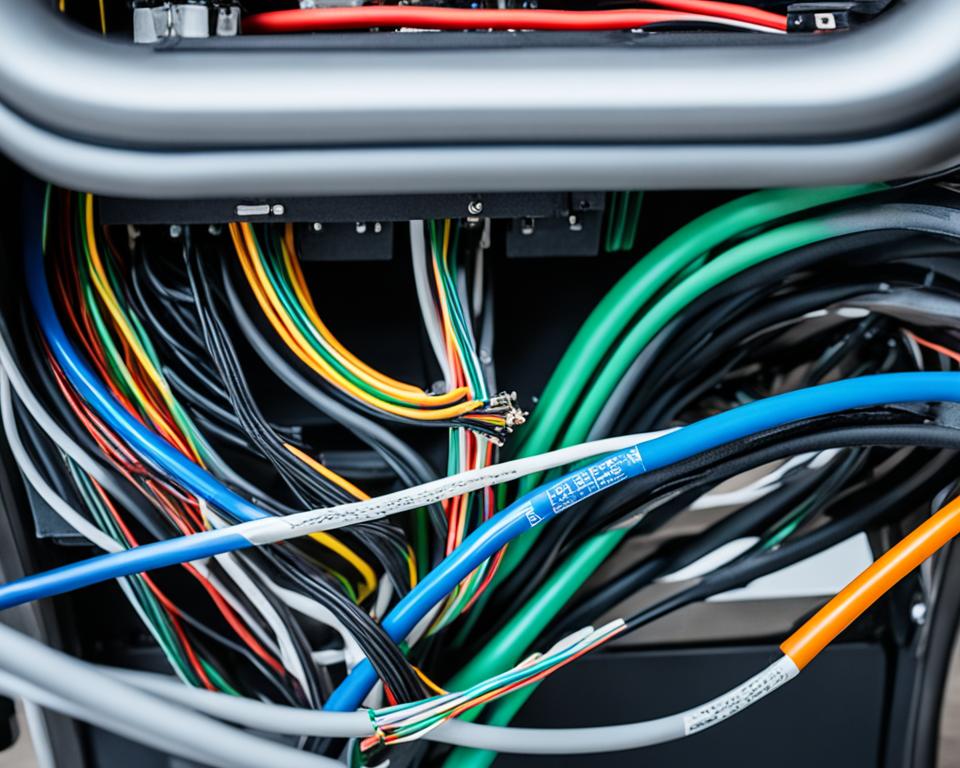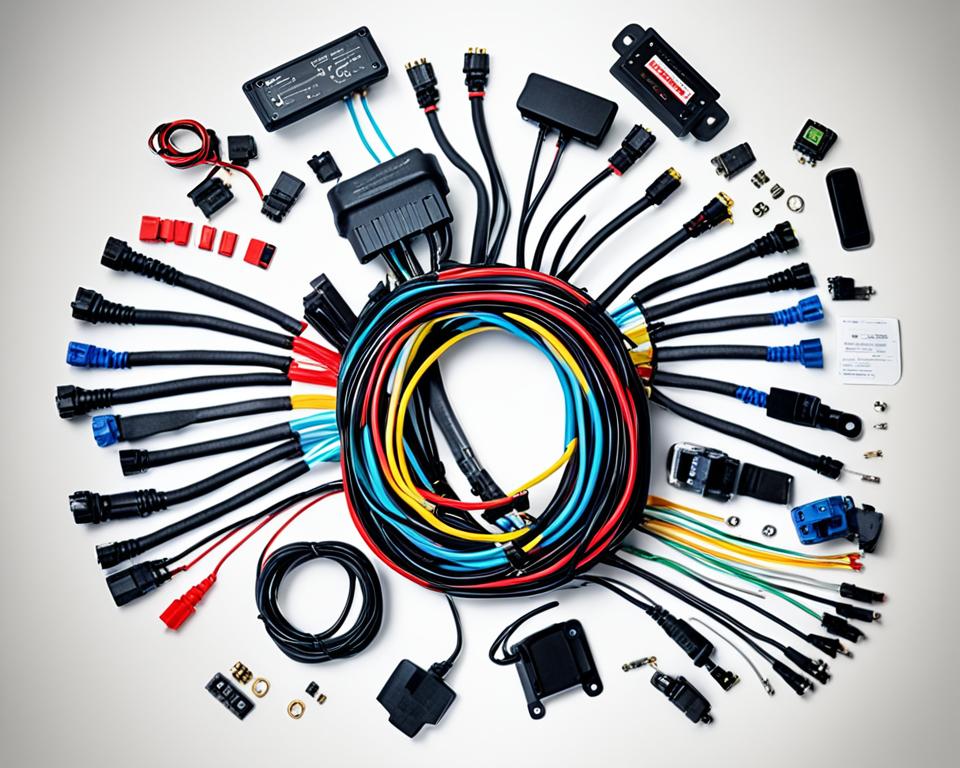I love electric bicycles and know how important the wiring harness is. It affects how well and reliably your bike works. Choosing the right connectors for your electric bike battery is key to a great ebike experience. You should think about things like convenience, durability, water resistance, and cost when picking connectors.
This guide will cover everything you need to know about electric bicycle wiring harnesses. We’ll look at the main parts of a wiring harness and why good wiring is crucial. We’ll also check out different connector types for electric bicycles. By the end, you’ll know how to set up a wiring system that works well for your electric bike.
Understanding Electric Bicycle Wiring Harness
The electric bicycle’s wiring harness is key to its electrical system. It connects the battery, controller, and motor. This network of electrical cables and connectors makes sure power flows well and systems talk to each other. Knowing the parts and their jobs is key for keeping your e-bike’s electrical system running right.
Components of a Wiring Harness
The wiring harness has wires in different colors, each with a special job. You’ll find power supply cables, battery connections, motor wiring, controller wiring, and sensor wiring. These parts together make up a complete wiring loom that lets your e-bike work as it should.
Importance of Proper Wiring
Good wiring is key for your electric bicycle’s safety and efficiency. It makes sure the battery, controller, and motor work together well. Proper wire management stops shorts, damage, and safety risks. Understanding and using good wiring can greatly improve your e-bike’s performance and life.
“Proper wiring is the foundation for a well-functioning electric bicycle. It’s a crucial aspect of maintaining and troubleshooting your ride.”

| Component | Function |
|---|---|
| Power Supply Cables | Transmit power from the battery to the controller and motor |
| Battery Connections | Secure the battery to the e-bike and enable power transfer |
| Motor Wiring | Connect the motor to the controller for speed and torque control |
| Controller Wiring | Facilitate communication between the controller and other components |
| Sensor Wiring | Transmit data from various sensors to the controller for monitoring and adjustments |
electric bicycle Wiring Harness
The wiring harness is key to an electric bicycle’s electrical system. It connects the battery, controller, and motor. These connections are very important.
Battery to Controller Connections
The link between the battery and the controller is vital. It brings the battery connections and power supply to the controller. The controller then sends power to the motor wiring and other parts.
It’s important to have a strong and reliable connection here. This helps keep the power steady and avoids problems like voltage drops.
Controller to Motor Connections
The connections from the controller to the motor wiring send power and control signals. They include the main power wires and sensor wires. These wires give feedback to the controller wiring.
Getting these connections right is key for a smooth ride. It makes sure your electric bicycle works well and safely.
Setting up the connections between the battery, controller, and motor is crucial. It makes your electric bicycle reliable and efficient.

Connector Types for Wiring Harness
Choosing the right connectors for electric bicycle wiring harnesses is key. Each connector has its own benefits and drawbacks. Let’s look at some top choices for e-bike wiring harnesses.
Anderson Connectors
Anderson connectors, also known as Anderson Power Poles (APPs), are a top pick. They’re affordable and easy to find. But, they can be hard to install and might not last as long or be as water-resistant as other options. Make sure to set them up right to avoid problems like disconnection or wrong polarity.
Deans Plugs
Deans plugs are a favorite for electric bikes. They can handle a lot of power and are small. But, they can be hard to solder and don’t like moisture well. It’s best to get them with pre-soldered pigtails to make installation easier.
XLR Connectors
XLR connectors are a strong, moisture-proof choice. They have a metal shell and a latch to keep them from coming loose. XLRs are sturdy and easy to use, but they might not fit well in some battery boxes. And, the metal shell could cause a short circuit if not installed carefully.
XT60 and XT90 Connectors
XT60 and XT90 connectors are great for e-bike wiring. They’re easy to solder, keep out moisture well, and come in different sizes for various power needs. XT90s are best for high-power setups, handling up to 90 amps. Both XT60 and XT90 are top picks for e-bike wiring.
Bullet Connectors
Bullet connectors are versatile for e-bike wiring. They range from 2.5mm to 8mm in size, each handling different currents. They’re a good mix of price and performance, and they resist moisture well, making them a good choice for e-bikes.
When picking connectors for your e-bike wiring, think about power needs, how easy they are to install, how long they last, and how well they stand up to moisture. Knowing the good and bad of each connector type helps you choose the best for your e-bike.
Wire Management and Installation Tips
Managing wires properly is key for a safe and neat e-bike wiring setup. By bundling and securing wires, I avoid damage and reduce shorts. This makes my e-bike look better and work better too.
Using cable ties or loom keeps my wires tidy and safe. I route them along the frame or under parts to look good and protect them. Adhesive clips or zip ties keep everything in place.
Choosing the right wire size is also important. The right size helps avoid voltage drops and heat. Using heat shrink tubing adds extra protection to my connections.

